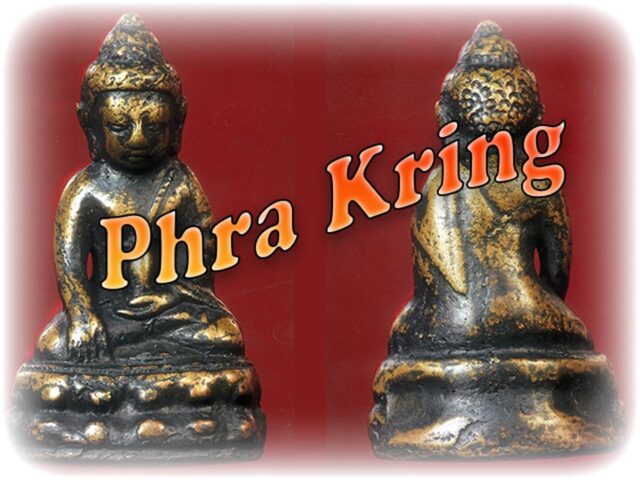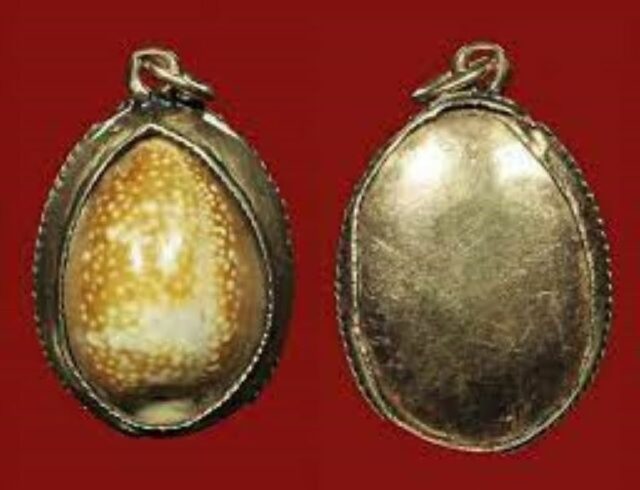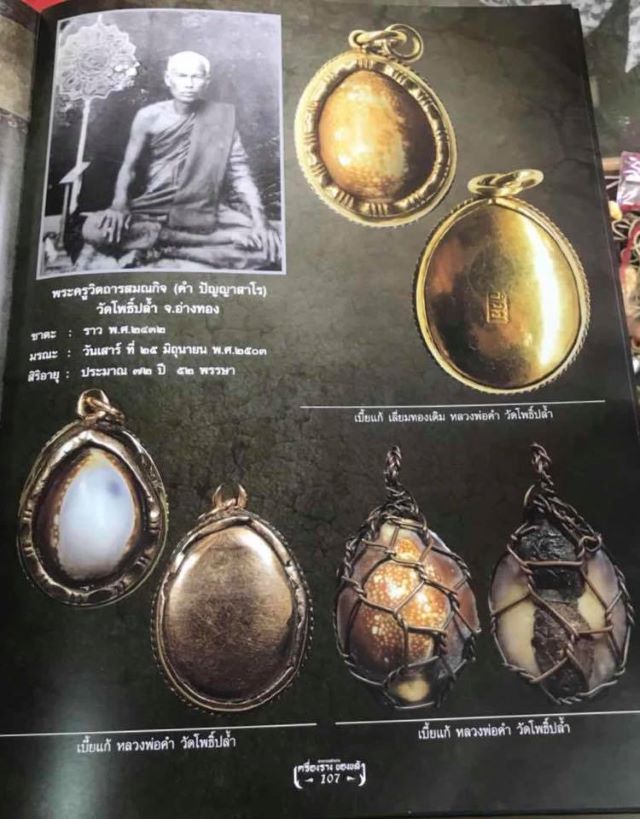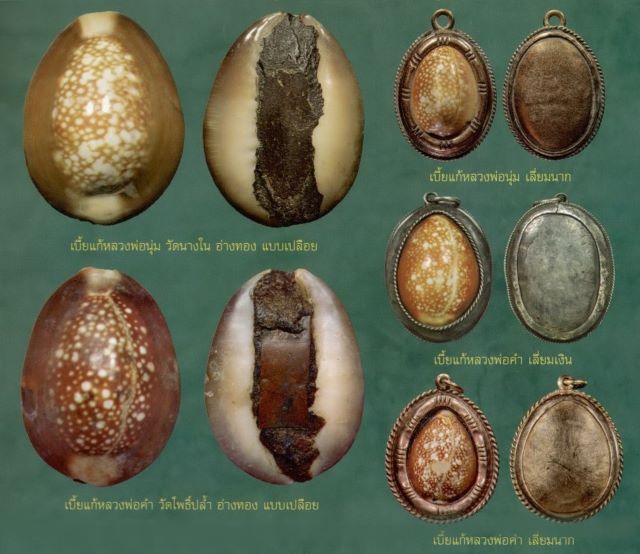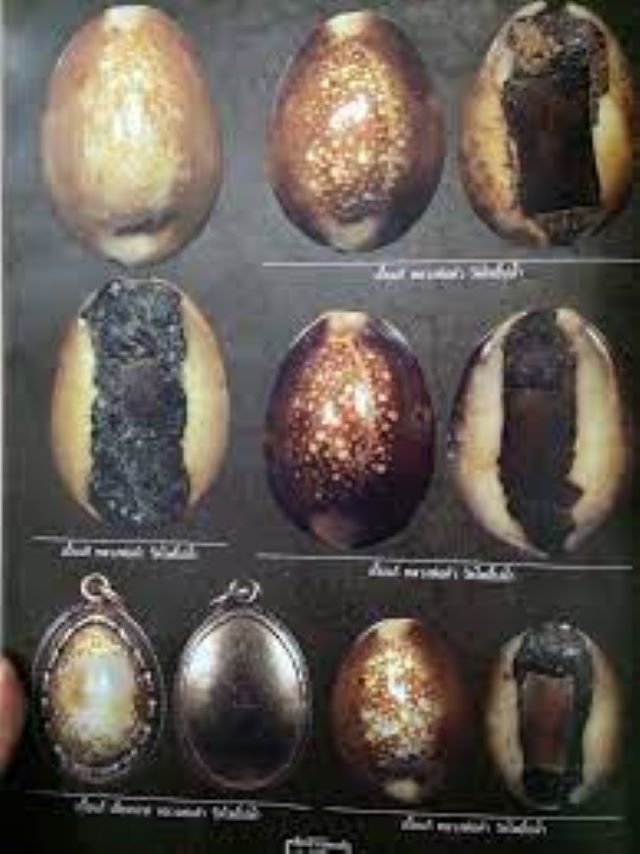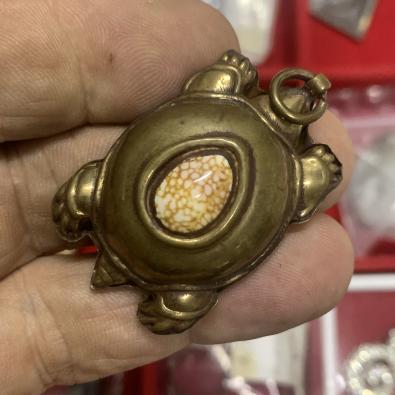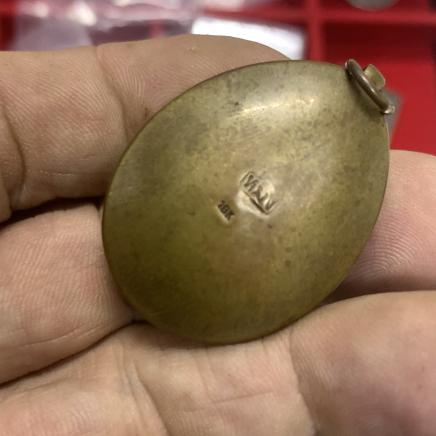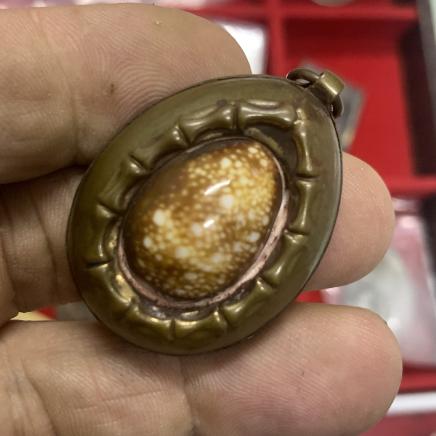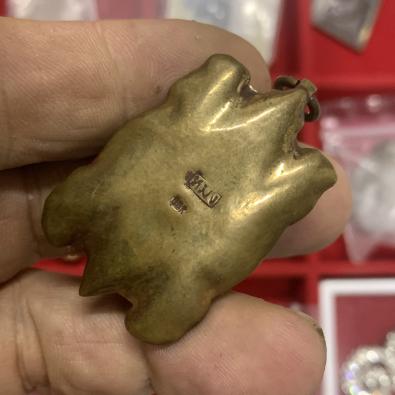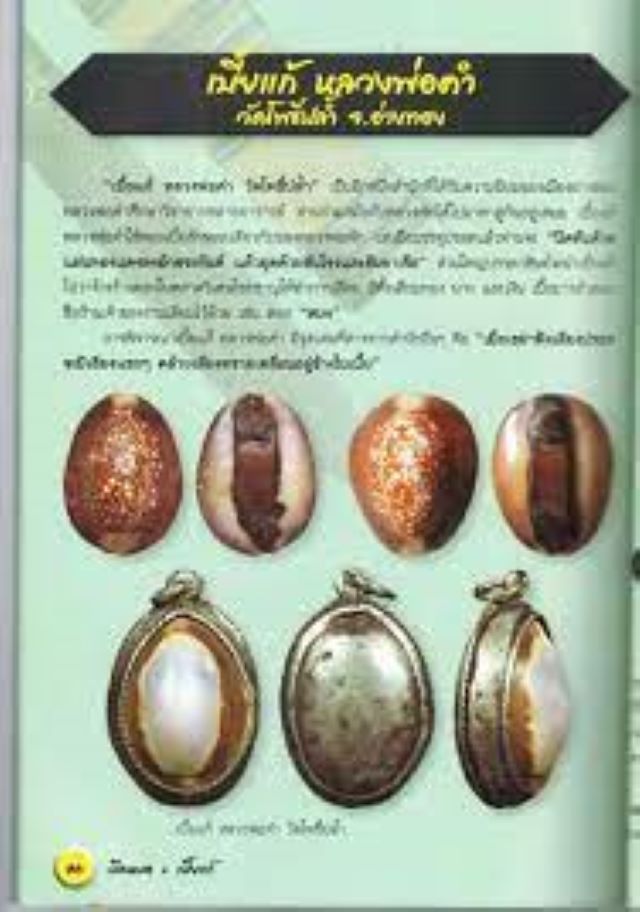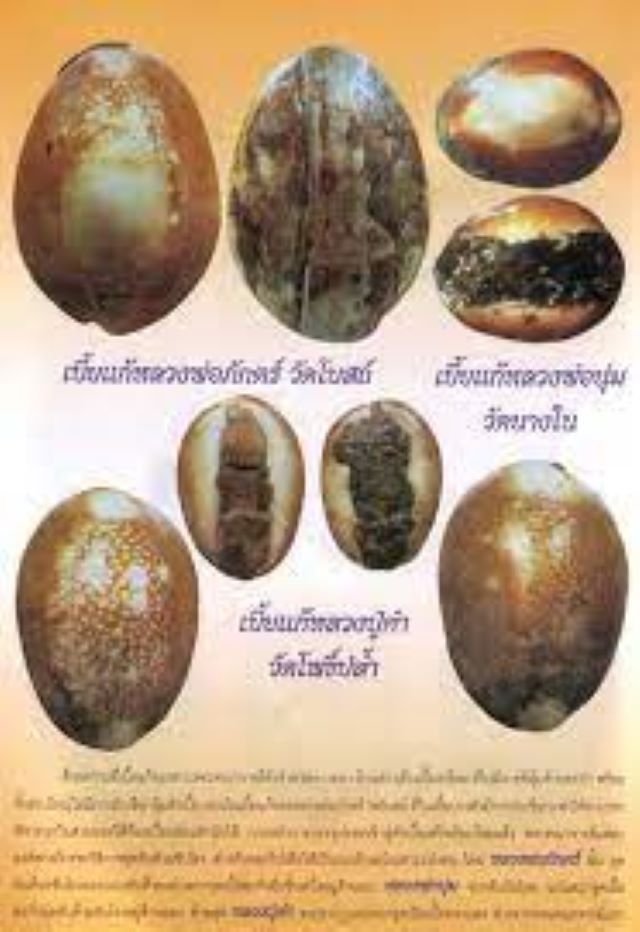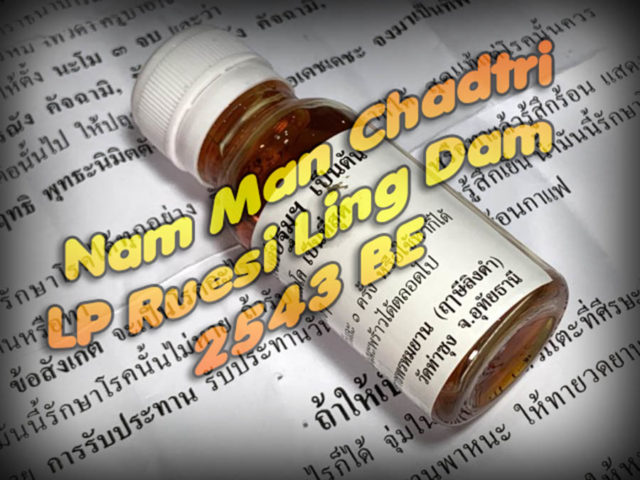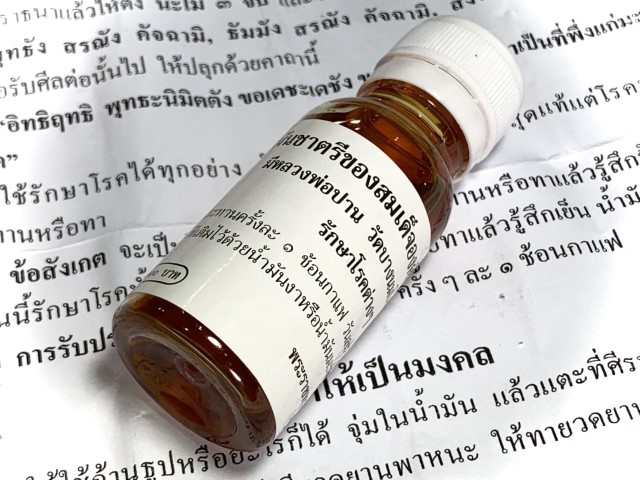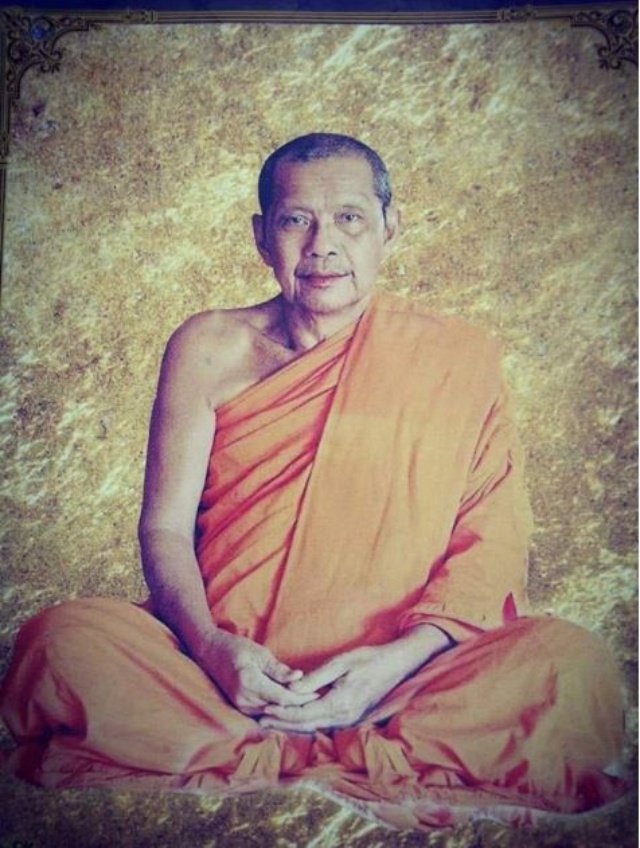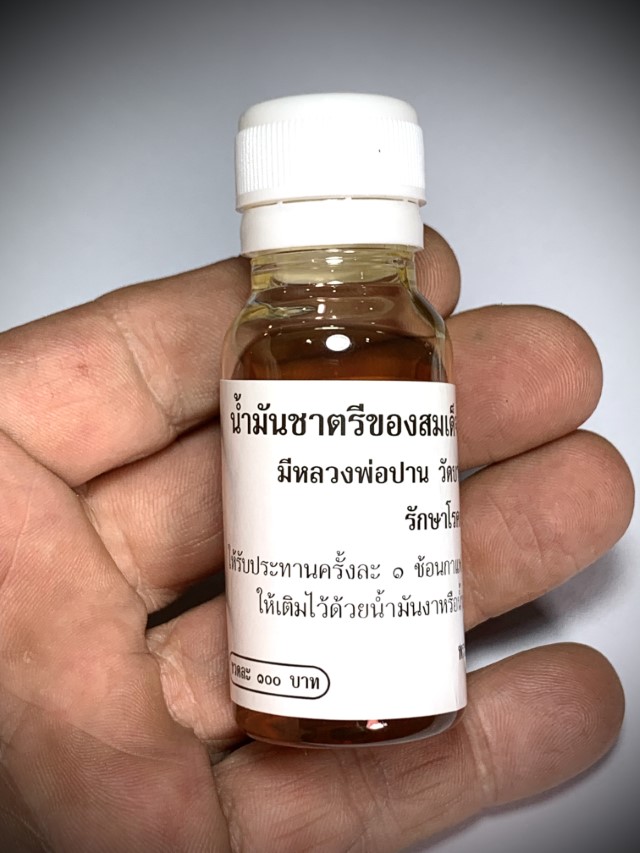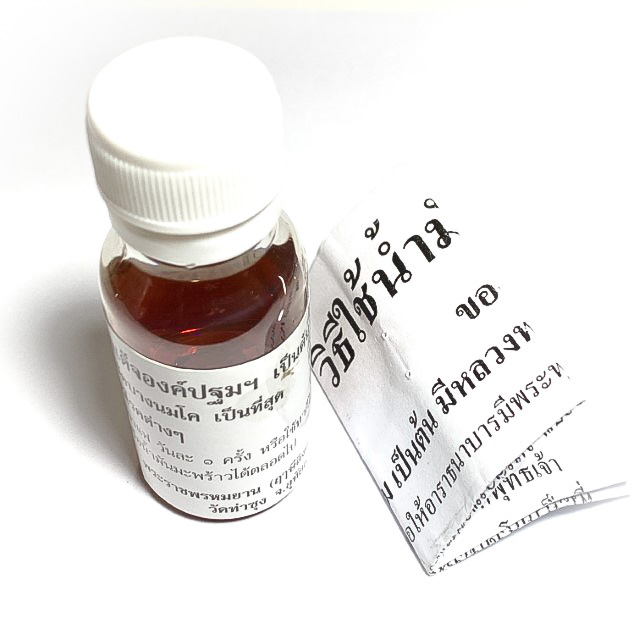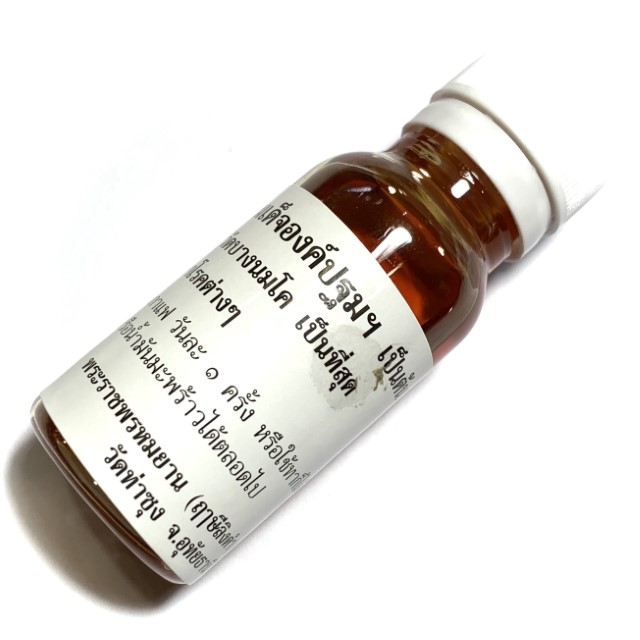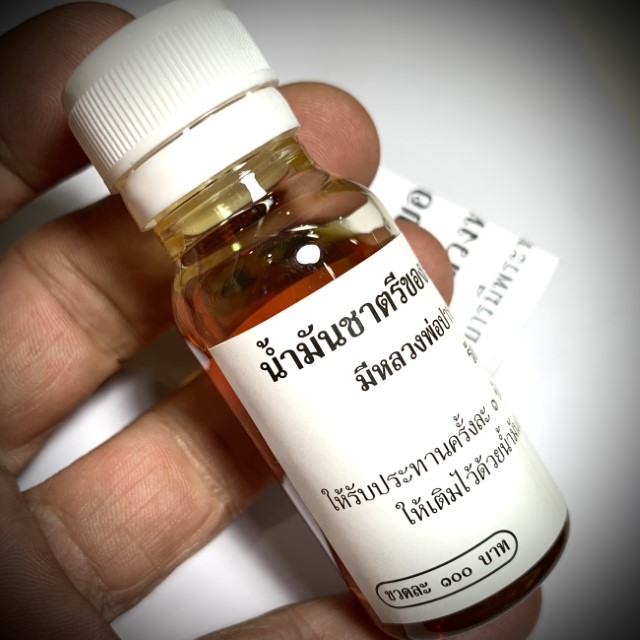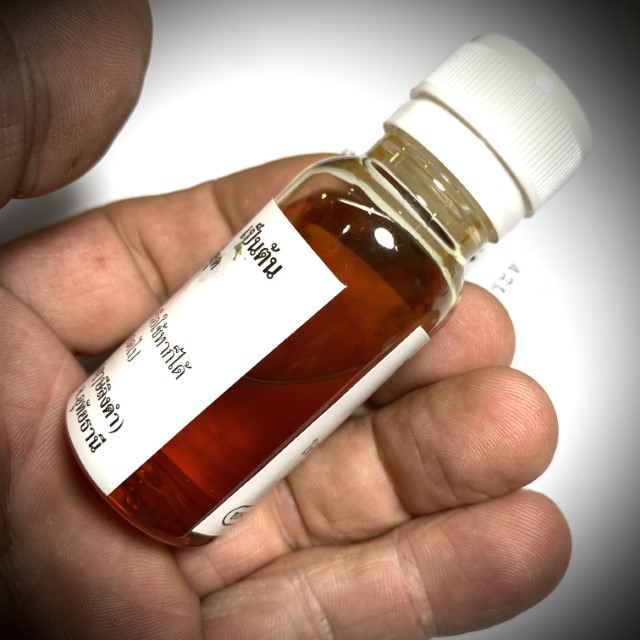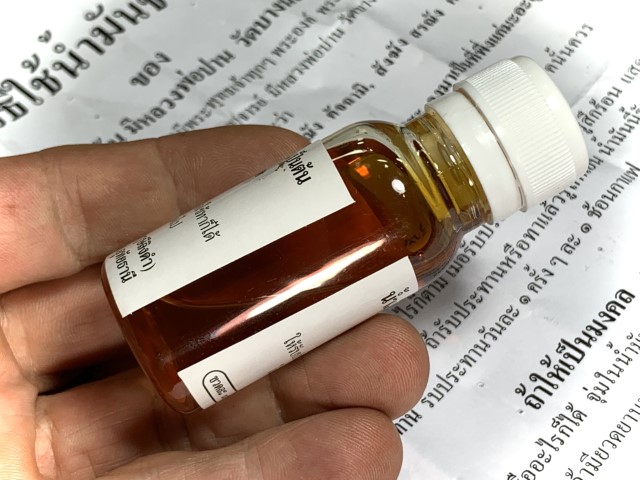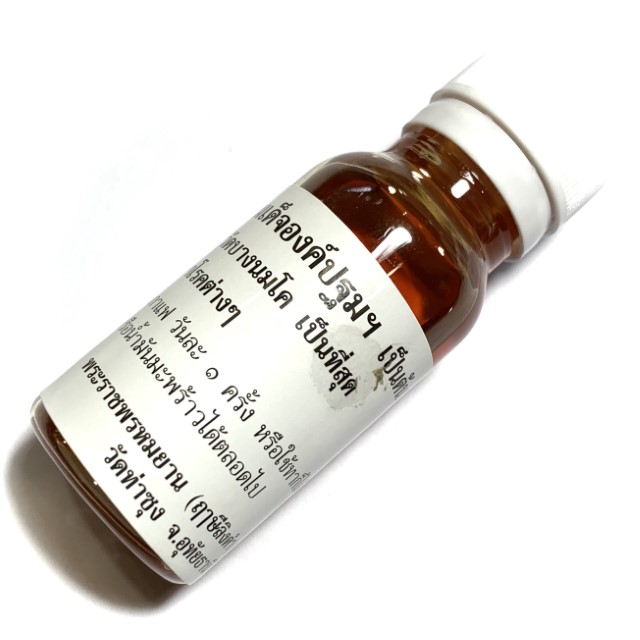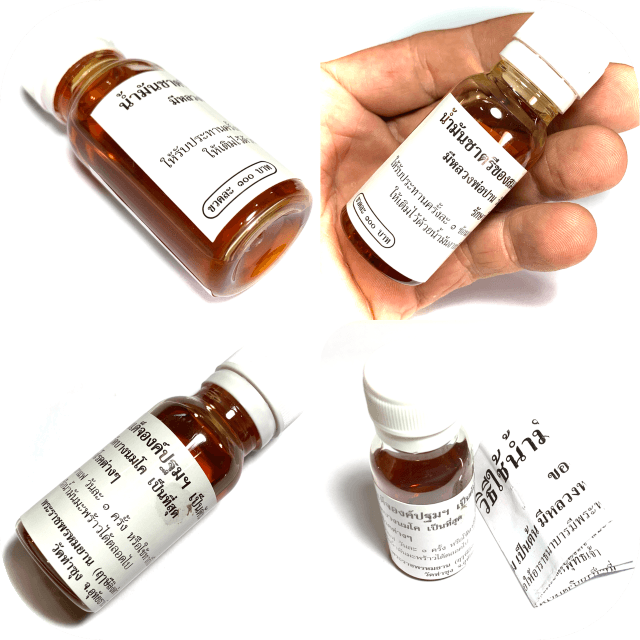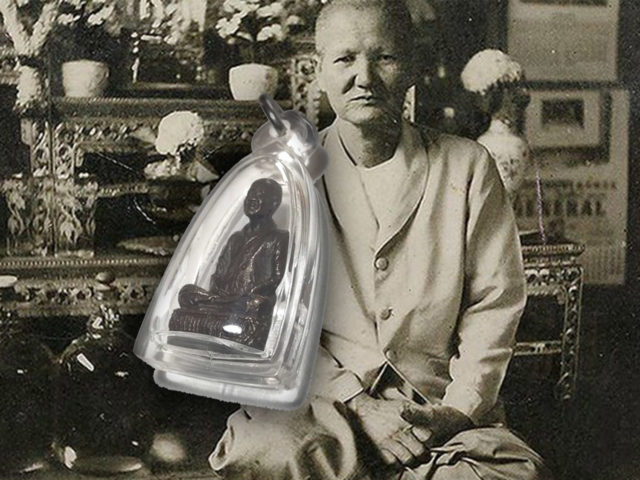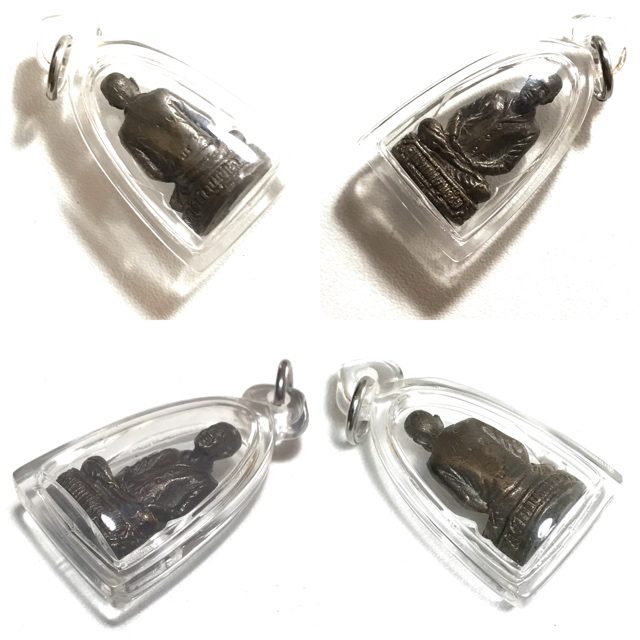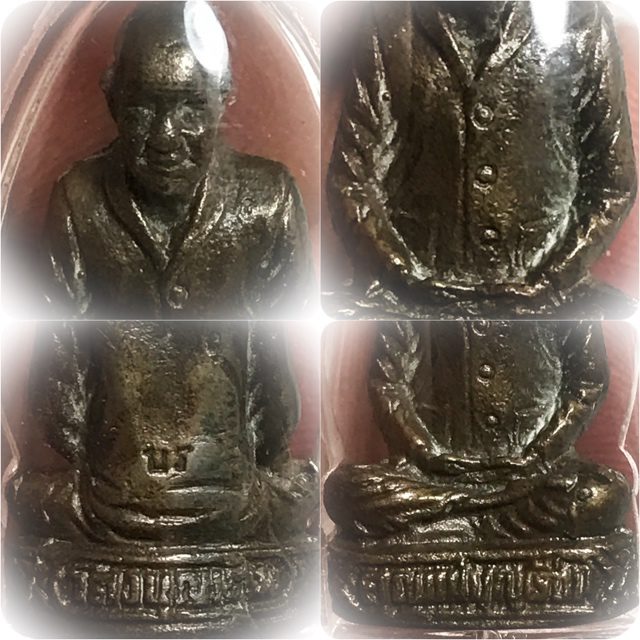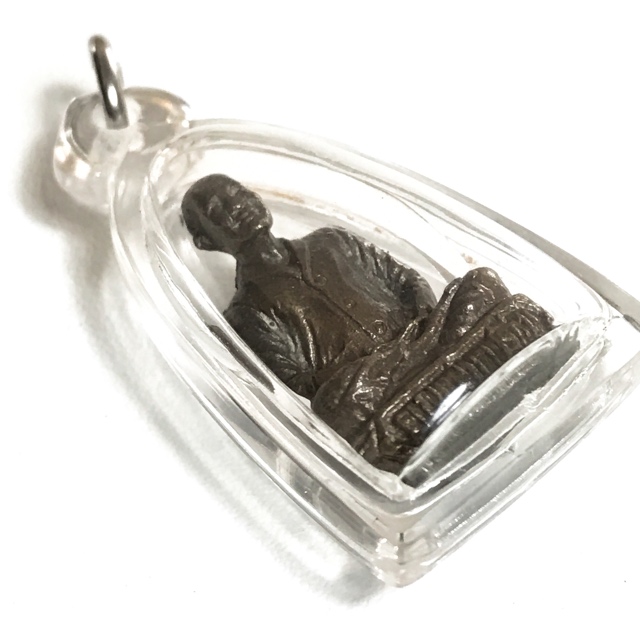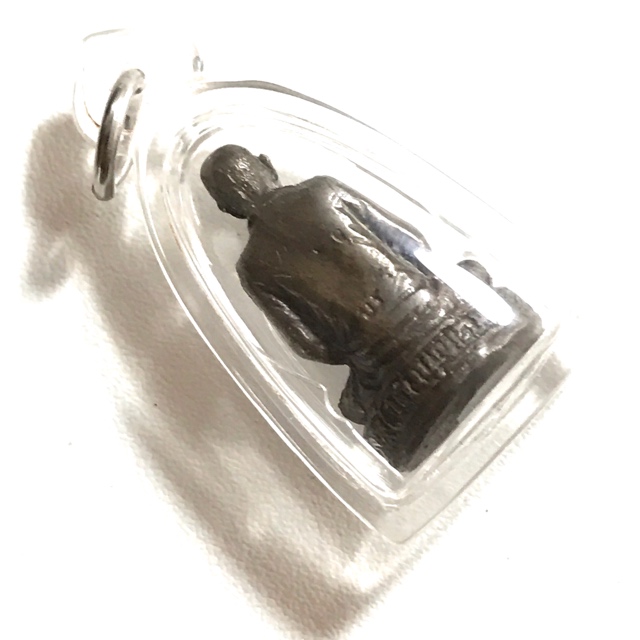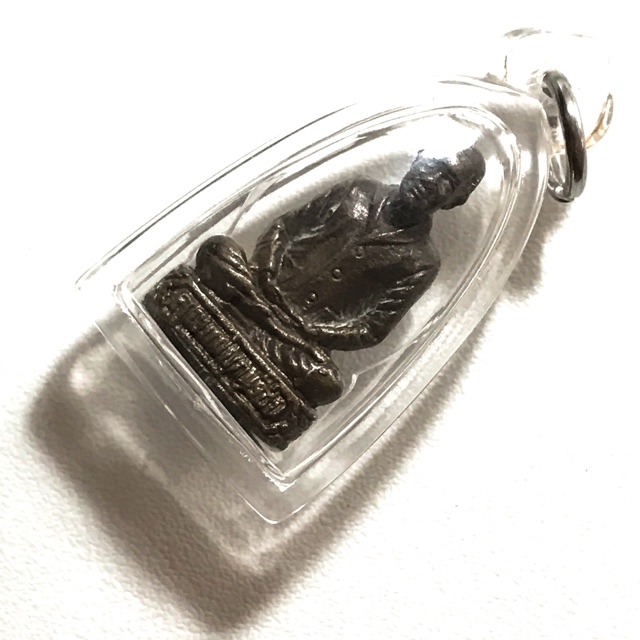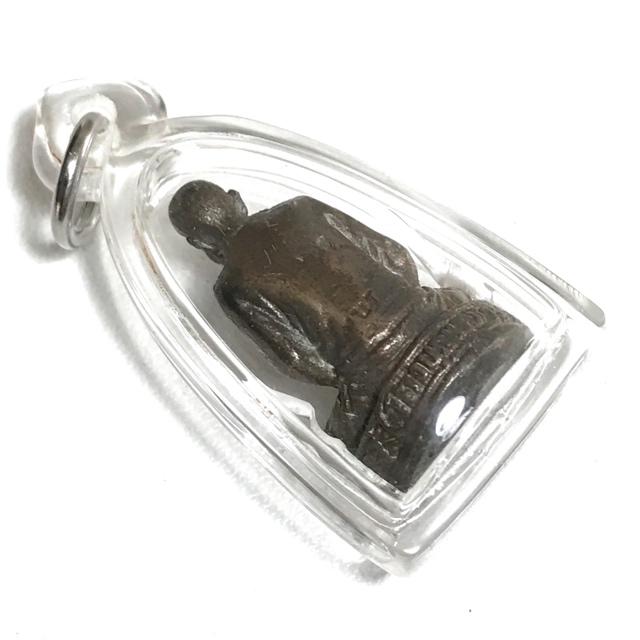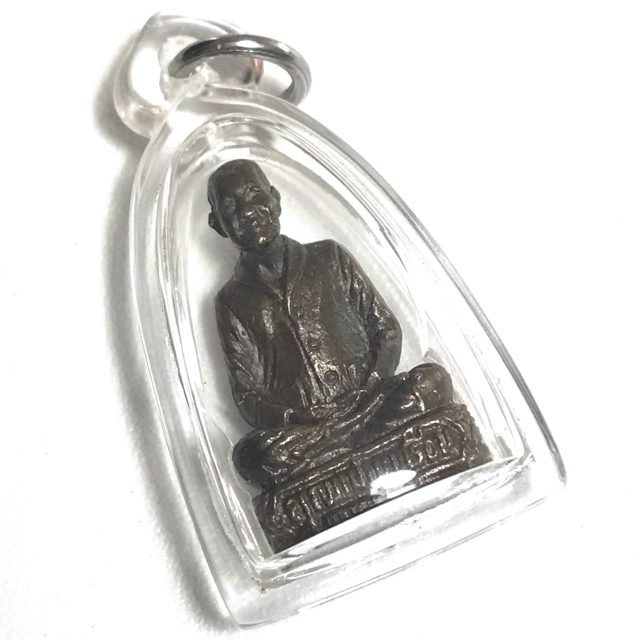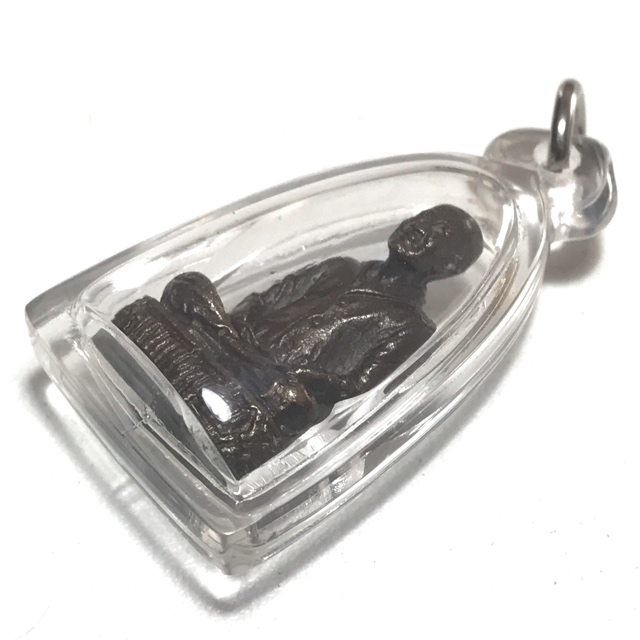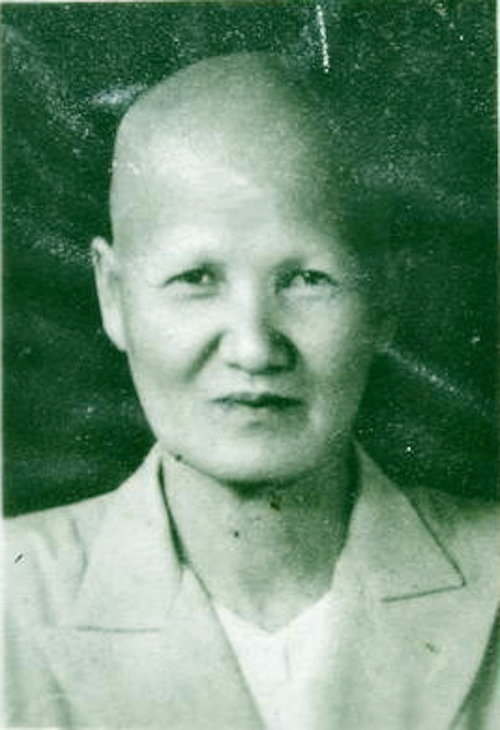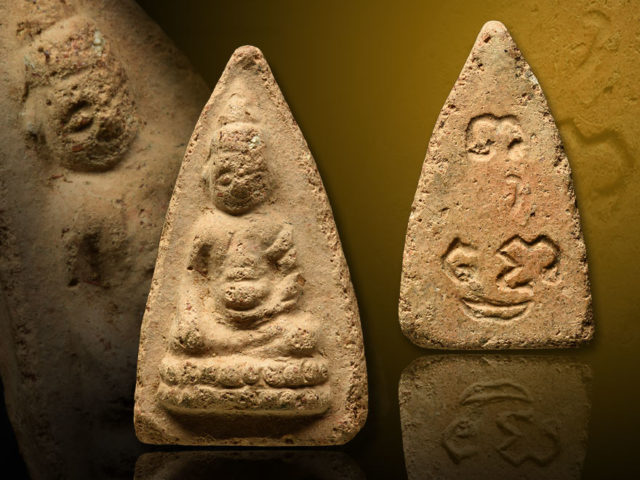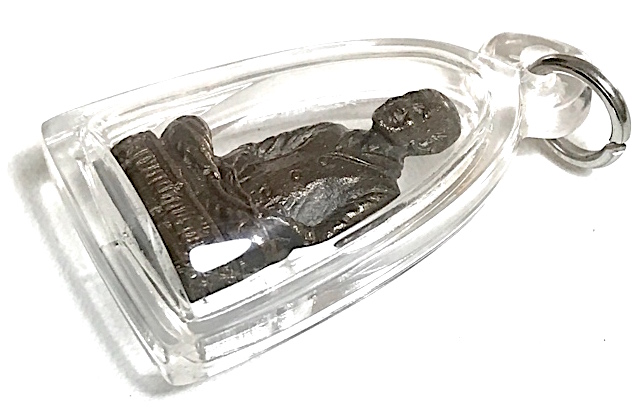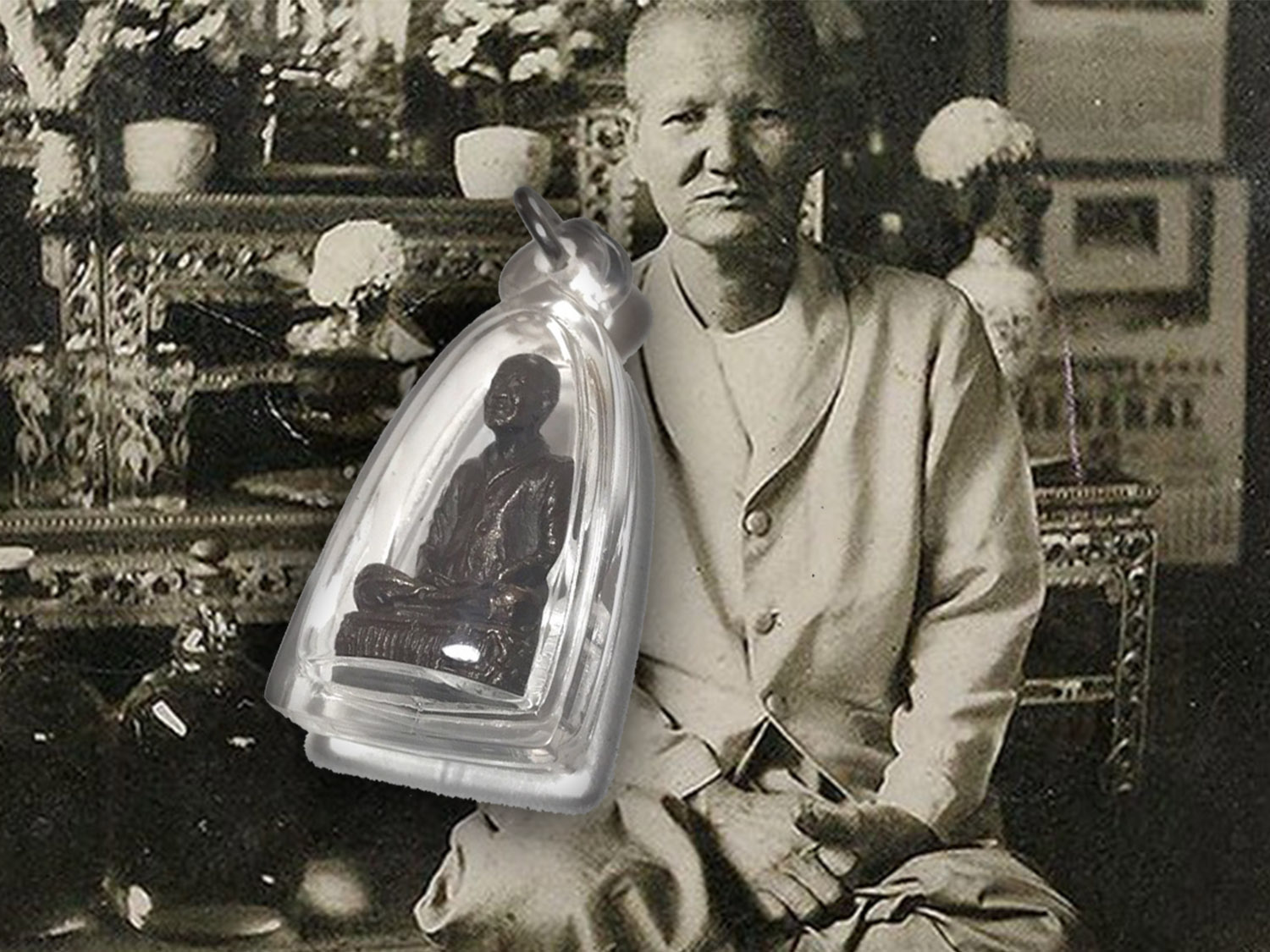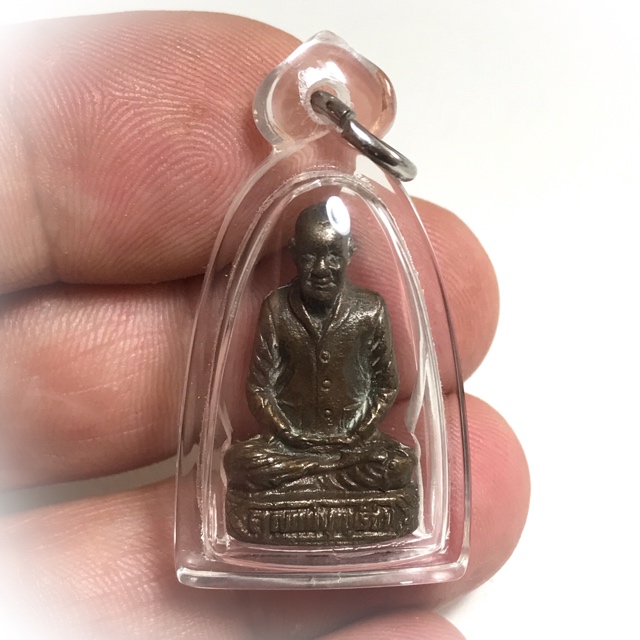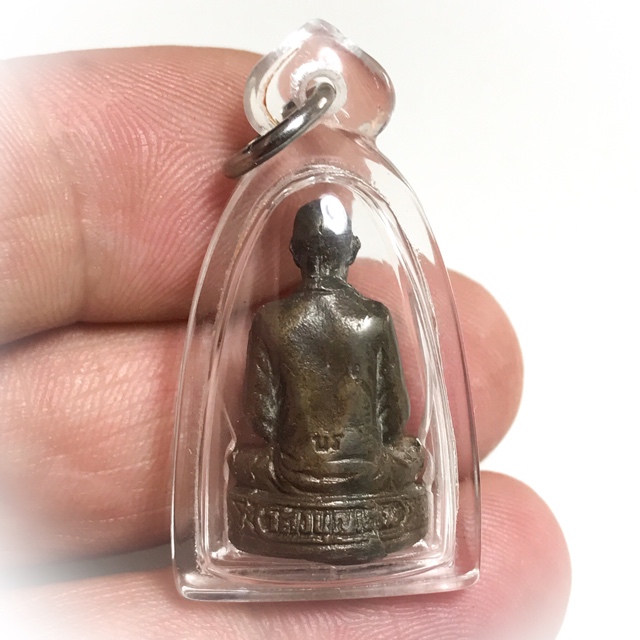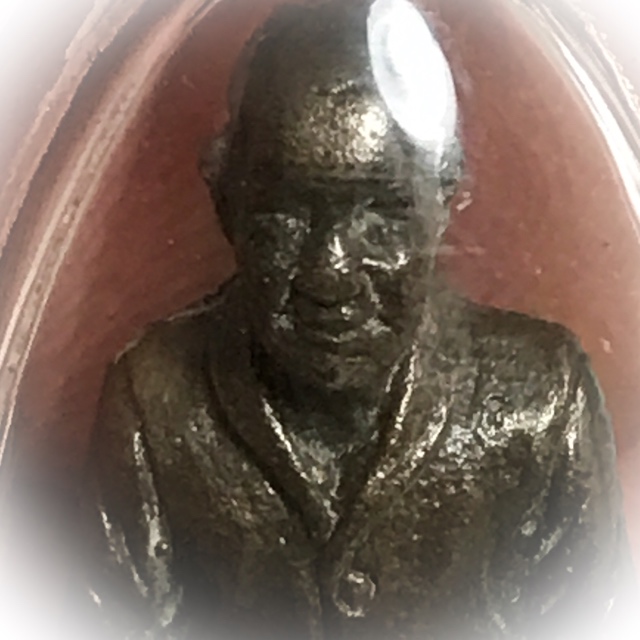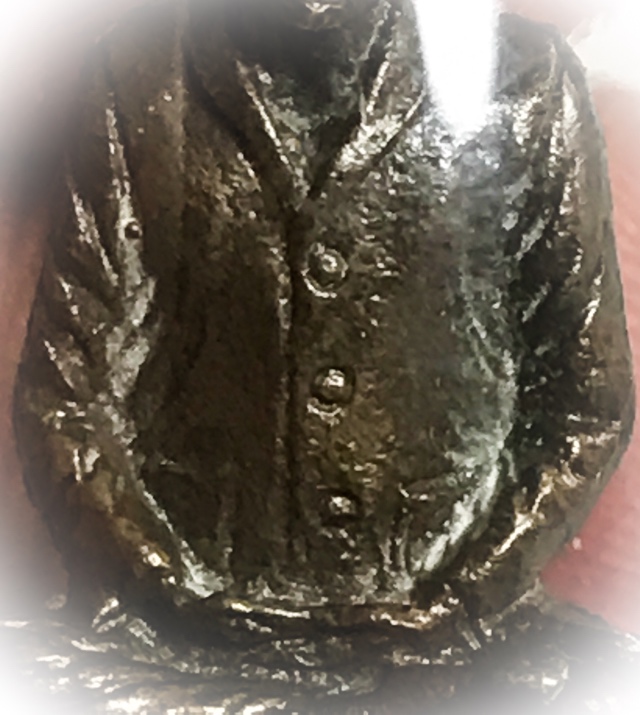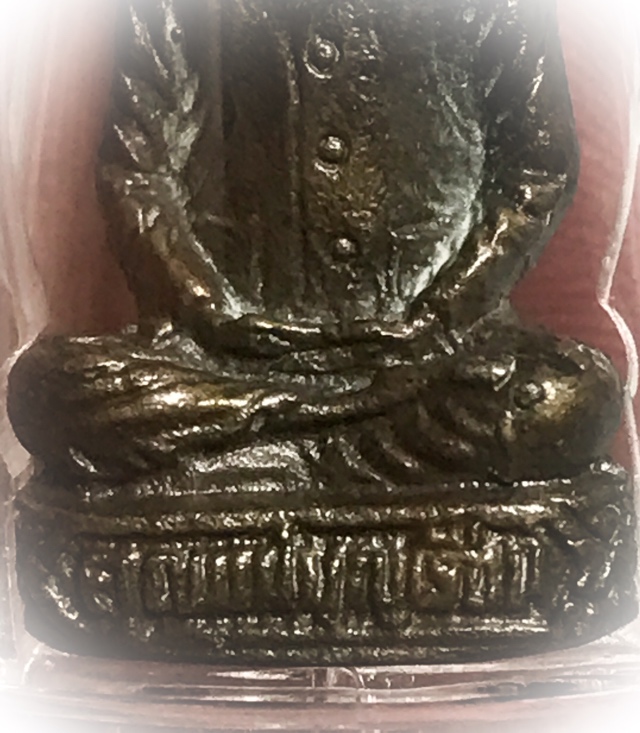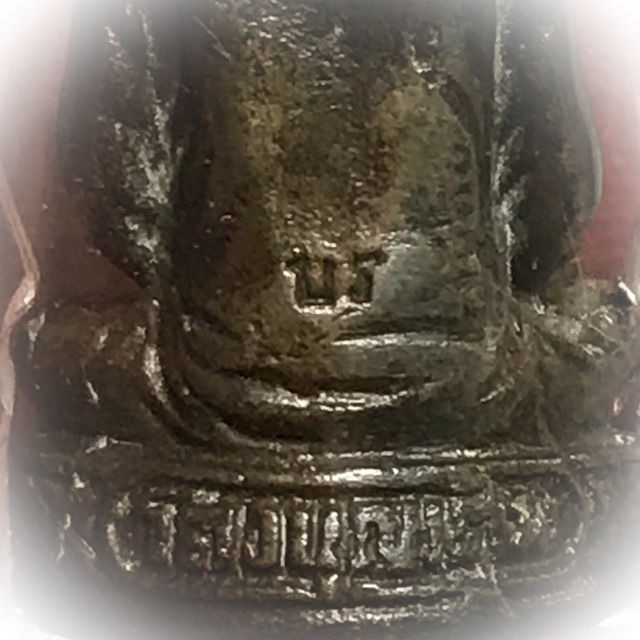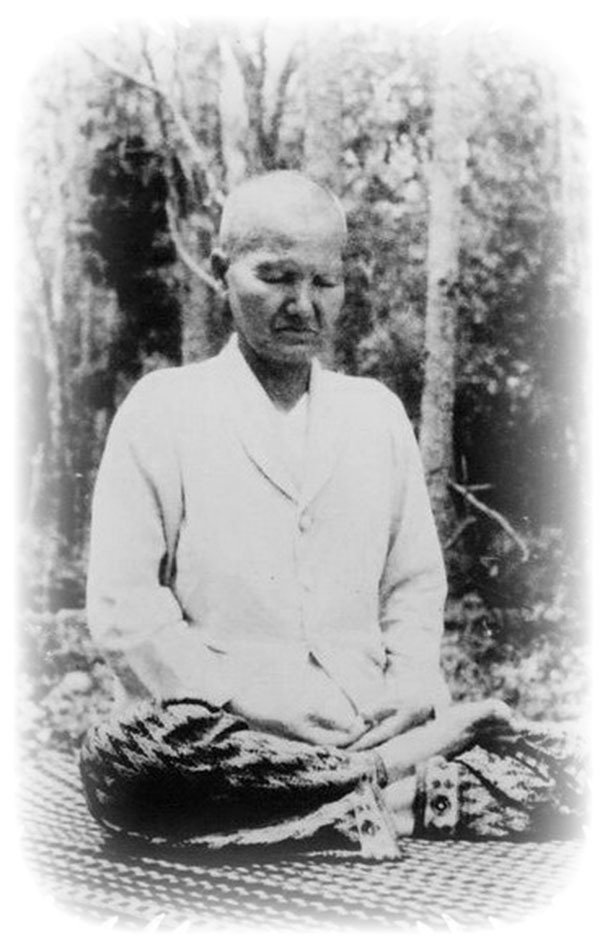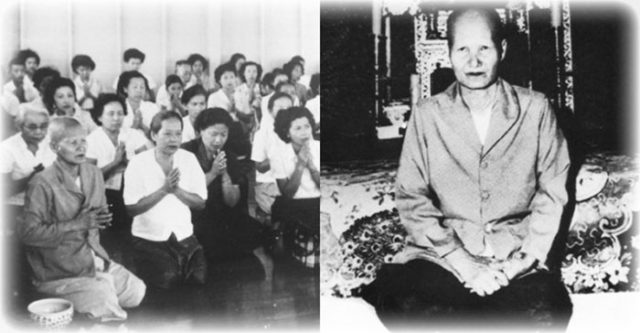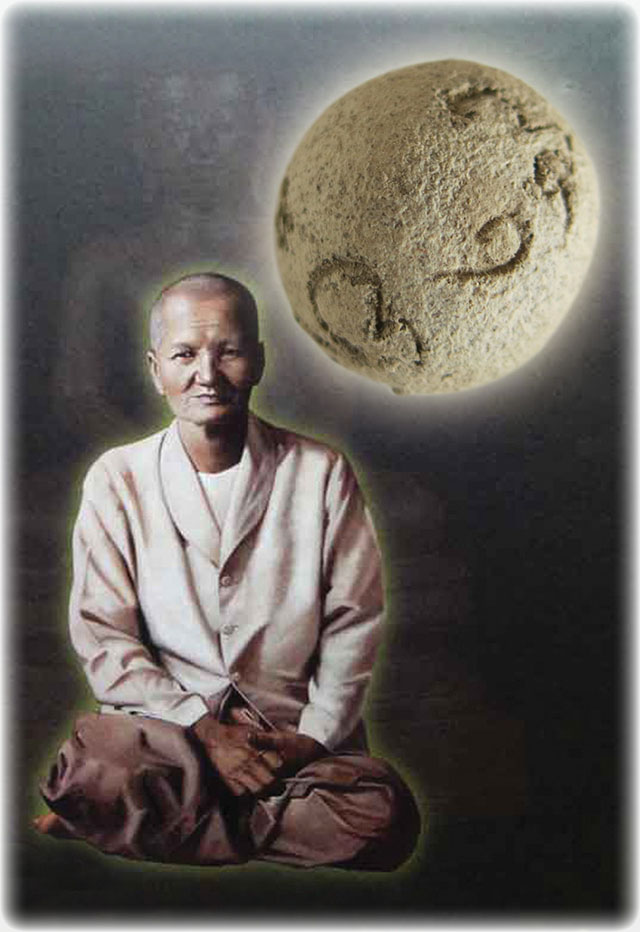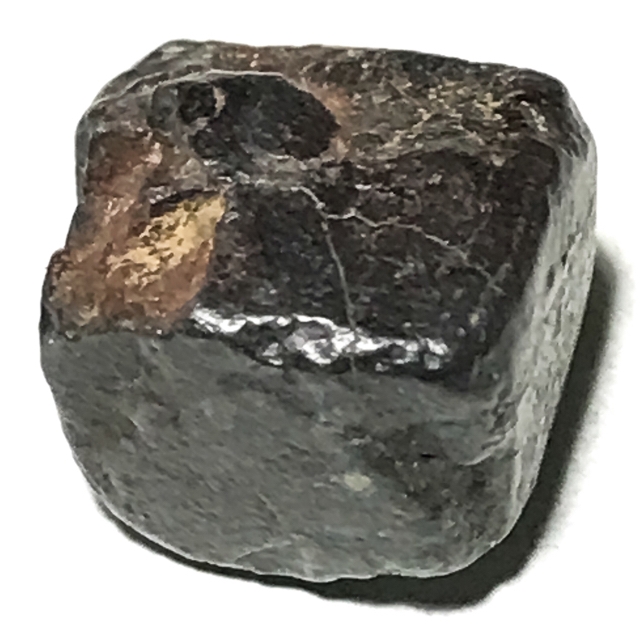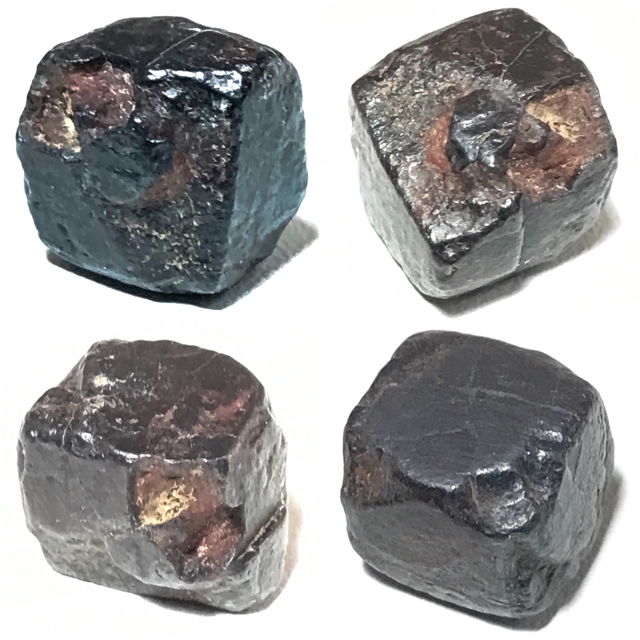The Mystical Legend of Phra Kring: The Sacred Medicine Buddha
Phra Kring, also known as the Medicine Buddha or Phra Buddha Bhaisajayaguru, stands as a revered figure in the mystical lands of Mahayana Buddhist countries, such as China, Tibet, and Taiwan. Its presence in Thailand’s Theravada tradition can be traced back to the days when Chinese migrants and businessmen ventured into the enchanting Kingdom of Siam. Among their rituals, paying homage to Phra Buddha Bhaisajayaguru became a popular practice, seeking protection and prosperity for their journeys and ventures. As fate would have it, many of these Chinese settlers eventually made Thailand their permanent home.
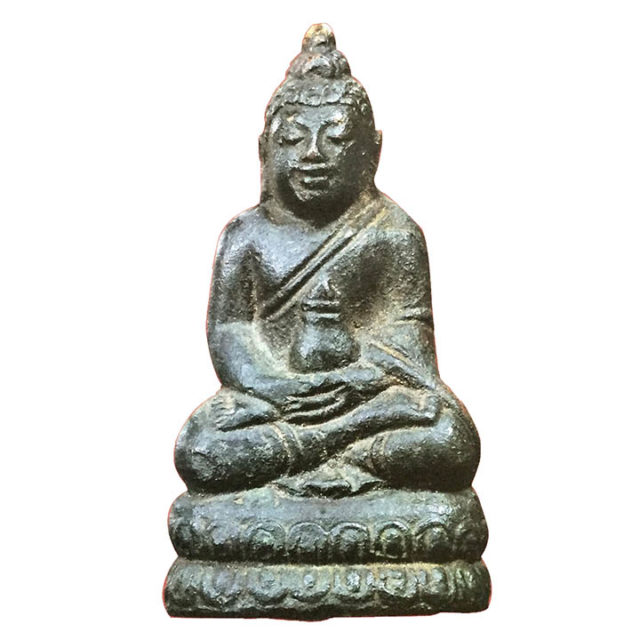
Above; Pra Kring Prajam Krob Nam Mont Mongkol Gao Luang Por Chaeng
As they embarked on long journeys far from their beloved land, they fashioned amulets bearing the likeness of Phra Buddha Bhaisajayaguru, known as “Yau Shi Fwo” or The Medicine Buddha, to accompany them on their travels. Legend has it that the resonating sound of a ball bearing within these amulets echoed the sacred chants of Mahayana, which employ bells. However, the creation of Phra Buddha Bhaisajayaguru amulets differed from the Thai tradition. According to the Mahayana tradition, the amulets were crafted by fusing the history of His Bodhisattvahood and Enlightenment with precious metals. In the Theravada tradition, a mandatory set of yant/takrut and preferably nava loha (9 sacred metals), were employed.
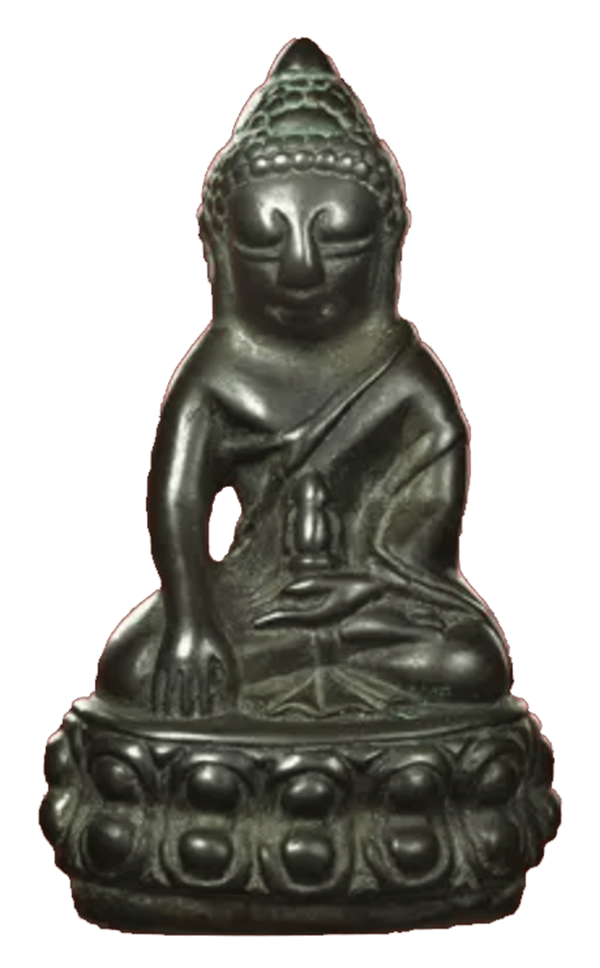
Phra Kring Wat Bovornives Early Era
The origins of Phra Kring in Thailand date back to the era of King Naresuan and Phra Somdej Panaret in Ayutthaya. The ancient scriptures, known as tamra, which detail the process of creating Phra Kring, state that to forge a truly potent and sacred Phra Kring, an extensive compilation of Yant designs, comprising more than 108 variations in takrut form, must be incorporated. Unfortunately, the tamra was lost during times of war, but it was later entrusted to Somdej Ma of Wat SamPloem, who safeguarded this sacred knowledge for decades. Eventually, Somdej Pavarit of Wat Bovorn inherited this precious wisdom, yet Phra Kring remained relatively unknown until the time of Phra Sangharat Pae, the abbot of Wat Suthat. Driven by his Teacher, Somdej Vanarat Daeng’s miraculous healing, achieved through holy water infused with a piece of Kring Pavarit, Ven. Sangharat Pae became enamored with the extraordinary healing capabilities of Phra Kring. With an unwavering determination, he devoted himself to the research and study of Phra Kring craftsmanship, ultimately leading to the fame and prominence of Phra Kring Wat Suthat.
Phra Sangharat Pae adamantly claimed that Wat Suthat crafted the most exceptional Phra Kring. This proclamation was substantiated by the fact that Wat Suthat Thepwararam, also known as the Temple in the Heavens, stands as one of Thailand’s six most revered temples. The principal Buddha statue of the temple, Phra Sisakayamuni, is positioned at the heart of the city, symbolizing the triumph over demons in alignment with Tamrab Mahapichaisongkram and the profound significance of Pang Marn Vichai Style. It is a realm guarded by celestial beings and benevolent angels. Furthermore, before the end of the year 2536, all the renowned Phra Krings of Wat Suthat were meticulously molded in the presence of the Bot, a sacred and mythical space overseen by Phra Sisakayamuni. It was within this sanctified environment that the Phra Kring amulets acquired their profound ‘Palang Saksit’, or spiritual power. However, in recent times, the practice of molding Phra Krings in such a sacred manner has diminished, and the whereabouts of their current creation remain a closely guarded secret. The enigmatic allure of these sacred objects has only grown with their elusive production.
Below; Phra Kring Wat Sutat Pra Sangkarach Pae
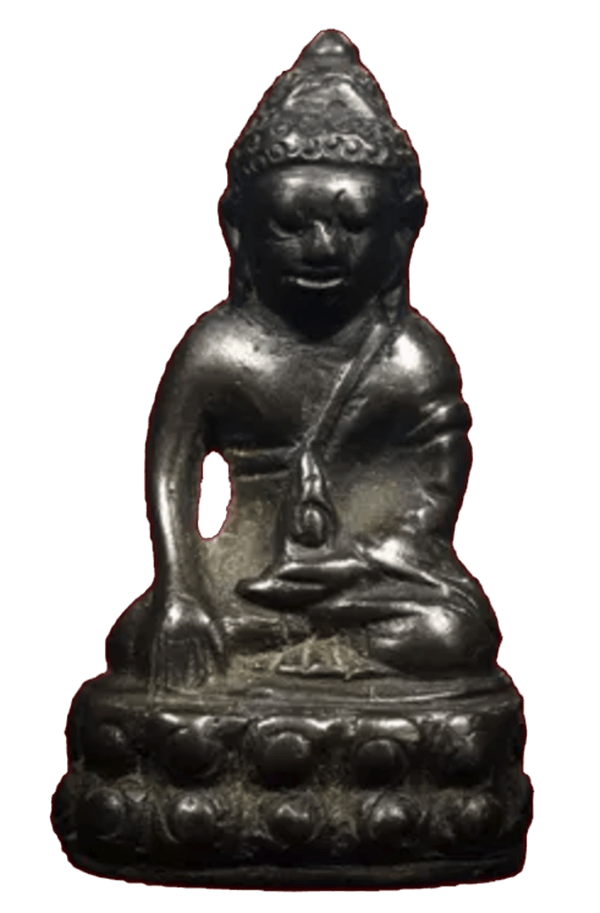
The Prominence of Phra Kring Wat Suthat
Driven by the miraculous healing of his Teacher, Somdej Vanarat Daeng, achieved through holy water infused with a piece of Kring Pavarit, Ven. Sangharat Pae became enamored with the extraordinary healing capabilities of Phra Kring. He devoted himself to the research and study of Phra Kring craftsmanship, ultimately leading to the fame and prominence of Phra Kring Wat Suthat. Phra Sangharat Pae adamantly claimed that Wat Suthat crafted the most exceptional Phra Kring. This proclamation was substantiated by the fact that Wat Suthat Thepwararam, also known as the Temple in the Heavens, stands as one of Thailand’s six most revered temples. The principal Buddha statue of the temple, Phra Sisakayamuni, is positioned at the heart of the city, symbolizing the triumph over demons in alignment with Tamrab Mahapichaisongkram and the profound significance of Pang Marn Vichai Style. It is a realm guarded by celestial beings and benevolent angels.
The magic of Phra Kring is found in the presence of the twelve magnificent vows made by Phra Buddha Bhaisajayaguru upon attaining Enlightenment, as recorded in the sacred Medicine Buddha Sutra. Radiating his divine light, he illuminates countless realms, offering the opportunity for all beings to achieve Buddhahood. Through his luminous lapis lazuli radiance, he awakens the dormant minds of sentient beings, guiding them on the path to enlightenment.
Phra Buddha Bhaisajayaguru’s benevolence extends beyond the spiritual realm. He vows to fulfill the material needs of sentient beings, providing them with abundance and prosperity. With unwavering dedication, he dispels heretical views and ignites the flame of true understanding, leading beings onto the path of enlightenment. He compassionately assists those who have faltered in their adherence to the Moral Precepts, especially those incarcerated souls who seek redemption.
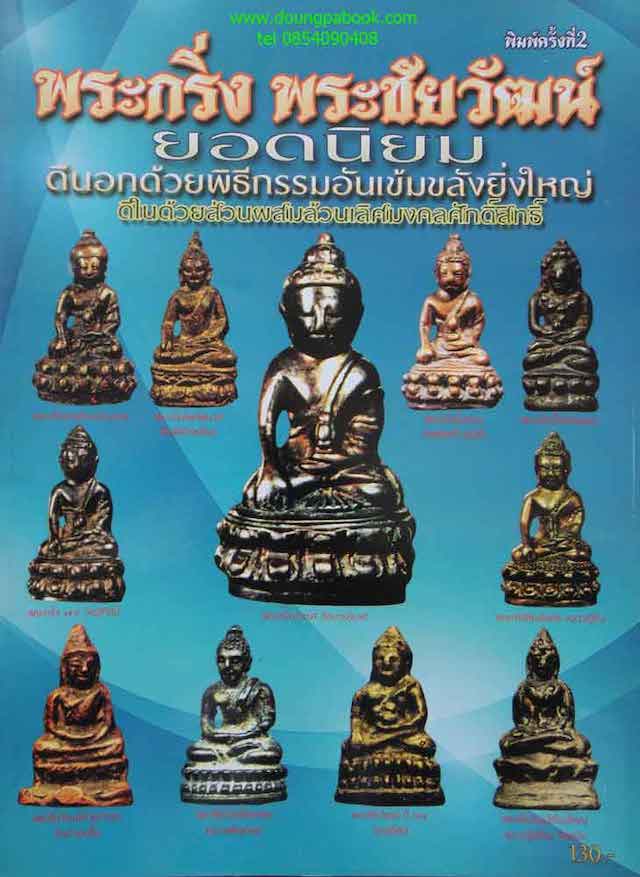
Phra Kring Yord Niyom Amulet Encyclopedia
The Essence of Phra Kring: The Twelve Magnificent Vows
The essence of Phra Kring lies in the embodiment of the twelve magnificent vows made by Phra Buddha Bhaisajayaguru upon attaining Enlightenment, as recorded in the sacred Medicine Buddha Sutra. These vows reflect the Medicine Buddha’s compassionate nature and his commitment to bringing healing, enlightenment, and relief to all sentient beings.
- Radiating Divine Light: Phra Buddha Bhaisajayaguru illuminates countless realms with his divine light, offering the opportunity for all beings to achieve Buddhahood.
- Awakening Dormant Minds: Through his luminous lapis lazuli radiance, the Medicine Buddha awakens the dormant minds of sentient beings, guiding them on the path to enlightenment.
- Material Fulfillment: Phra Buddha Bhaisajayaguru vows to fulfill the material needs of sentient beings, providing them with abundance and prosperity.
- Dispelling Heretical Views: With unwavering dedication, the Medicine Buddha dispels heretical views and ignites the flame of true understanding, leading beings onto the path of enlightenment.
- Healing Powers: The Medicine Buddha’s healing powers are renowned far and wide. He brings solace to those afflicted by physical ailments, deformities, and illnesses, offering them the hope of restoration and well-being.
- Relief from Suffering: Phra Buddha Bhaisajayaguru’s compassionate embrace extends to the destitute and the sick, providing them with relief from suffering and offering a glimmer of hope in their darkest hours.
- Guiding Transformation: For women yearning for rebirth as men, the Medicine Buddha guides them on their desired path of transformation.
- Healing Mental Disturbances: The mind, often burdened by afflictions and delusions, finds solace in the Medicine Buddha’s presence. With his divine touch, he helps heal mental disturbances, bringing clarity and serenity to troubled souls.
- Liberation from Oppression: The oppressed find refuge in the compassionate gaze of Phra Buddha Bhaisajayaguru, as he liberates them from the chains of suffering and injustice.
- Alleviating Hunger and Thirst: In the face of insurmountable hunger and thirst, the Medicine Buddha alleviates the unbearable anguish of those afflicted, bestowing upon them nourishment and relief.
- Clothing the Destitute: Furthermore, Phra Buddha Bhaisajayaguru extends his compassionate hand to clothe the destitute, shielding them from the biting cold and torment of mosquitoes.
- Invocation of Blessings: To invoke the blessings of Phra Buddha Bhaisajayaguru and Phra Kring, one can recite the sacred Katha, a powerful mantra that connects with the divine energy of the Medicine Buddha, bringing forth healing, protection, and spiritual enlightenment.
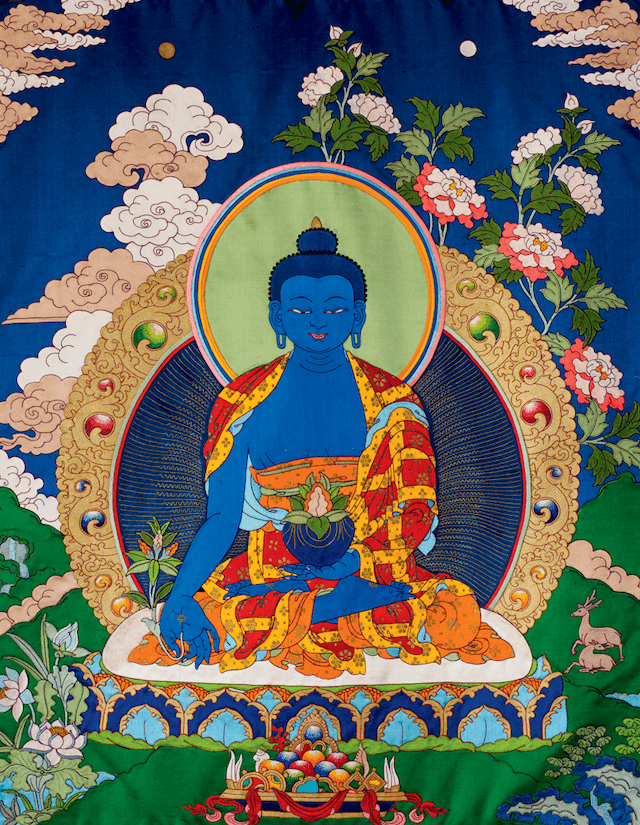
The Medicine Buddha’s healing powers are renowned far and wide. He brings solace to those afflicted by physical ailments, deformities, and illnesses, offering them the hope of restoration and well-being. His compassionate embrace extends to the destitute and the sick, providing them with relief from suffering and offering a glimmer of hope in their darkest hours. For women yearning for rebirth as men, he guides them on their desired path of transformation.
The mind, often burdened by afflictions and delusions, finds solace in the Medicine Buddha’s presence. With his divine touch, he helps heal mental disturbances, bringing clarity and serenity to troubled souls. The oppressed find refuge in his compassionate gaze, as he liberates them from the chains of suffering and injustice.
In the face of insurmountable hunger and thirst, Phra Buddha Bhaisajayaguru alleviates the unbearable anguish of those afflicted, bestowing upon them nourishment and relief. Furthermore, he extends his compassionate hand to clothe the destitute, shielding them from the biting cold and torment of mosquitoes.
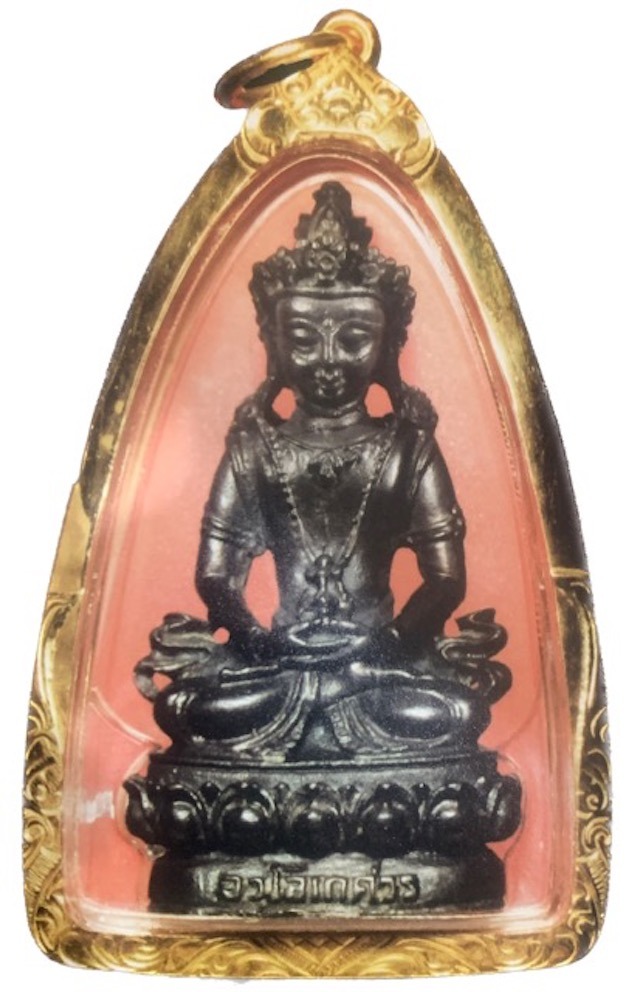
To invoke the blessings of Phra Buddha Bhaisajayaguru and Phra Kring, one can recite the sacred Katha:
“Namo Bhagavate Bhaiśajyaguru Vaidūryaprabharājāya Tathāgatāya Arhate Samyaksambuddhāya Tadyathā: Oṃ Bhaiśajye Bhaiśajye Bhaiśajya-Samudgate Svāhā“
These powerful words hold the key to connecting with the divine energy of the Medicine Buddha, bringing forth healing, protection, and spiritual enlightenment.
As the legacy of Phra Kring endures, the mystique surrounding its creation and the profound vows of Phra Buddha Bhaisajayaguru continue to captivate the hearts and minds of devotees. With each passing day, the ancient wisdom of this sacred talisman persists, guiding seekers on their spiritual journey and offering solace to those in need.Bhaiṣajyaguru, also known as the Medicine Buddha, is the leader of a group of eight healing Buddhas. Shakyamuni Buddha, the historical Buddha, is also one of these eight Buddhas.
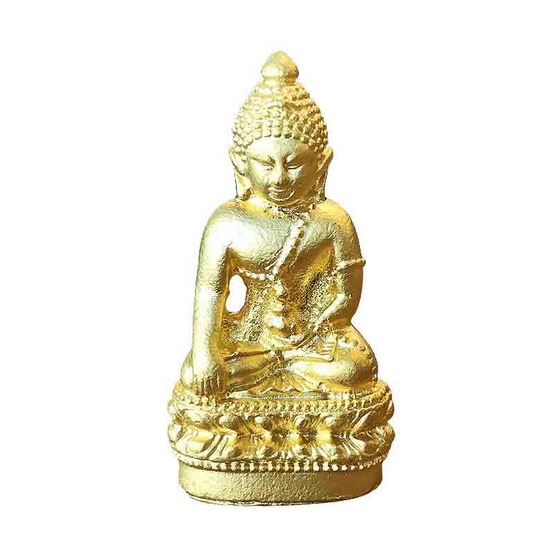
The Everlasting Power of Phra Kring
The essence of Phra Kring lies in its ability to channel the divine energy and blessings of Phra Buddha Bhaisajayaguru. As devotees wear or keep Phra Kring amulets close to them, they believe in the amulet’s power to bring forth healing, protection, and prosperity. The resonance of the sacred vows made by the Medicine Buddha serves as a constant reminder of his boundless compassion and the transformative potential of spiritual enlightenment.
Connecting with Phra Kring’s Blessings
To connect with the blessings of Phra Kring, devotees often recite the sacred Katha, a mantra that invokes the divine energy of Phra Buddha Bhaisajayaguru. The Katha holds the key to establishing a deep spiritual connection and opening oneself to the healing and transformative powers of Phra Kring. By reciting the Katha with sincerity and devotion, one can invite the presence of the Medicine Buddha into their lives and experience the profound impact of his compassionate energy.
